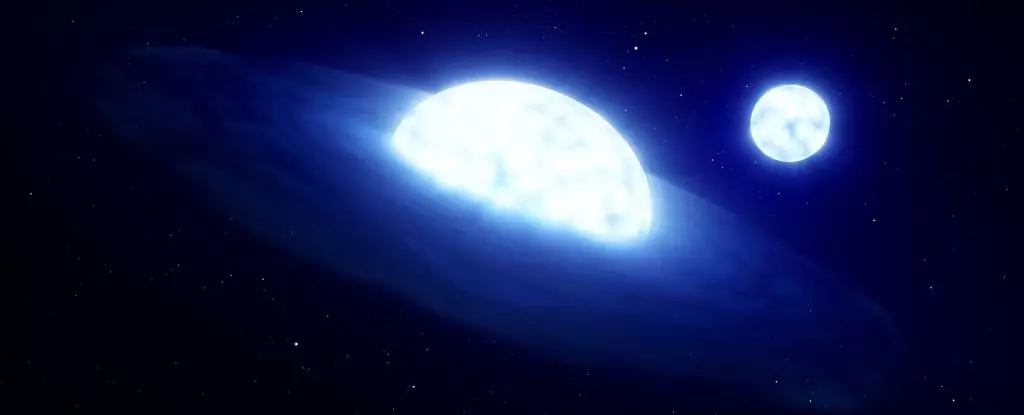In a delightful twist, space seems to harbor its own breed of vampires, concealing evidence of their voracious appetites in the most unexpected places. Recent studies of the brightest and hottest stars in the Milky Way have led astronomers to speculate that binary star systems, wherein one star feeds off its companion, might actually be trinary systems. These systems host a drained husk of one star basking in the larger star’s glow, with a second companion lurking nearby. This revelation challenges our preconceived notions about the prevalence of such triple-star systems.
Among the scorching B-type stars, there exists a peculiar subset known as Be stars. These stars, characterized by their rapid rotation and the emission of Balmer wavelengths, are exceptionally bright, hot, and blue, with temperatures reaching up to 30,000 Kelvin. The enigmatic feature that sets Be stars apart is a disk of swirling material around them, potentially originating from the stars shedding mass as they spin or through stellar vampirism. In the latter scenario, a more massive star gravitationally strips its companion of material, resulting in the formation of a disk that feeds into the larger star. Consequently, the increased mass causes the larger star to spin faster. However, this theory raises a fundamental question: where are the close companions?
A team of astronomers, led by Jonathan Dodd from the University of Leeds, set out to investigate this conundrum. Employing the technique of astrometry, they meticulously monitored the stars’ movements across the sky over extended periods, spanning from months to a decade. By observing these trajectories, astronomers can discern the presence of companion stars. According to Dodd, “If a star moves in a straight line, we know there’s just one star, but if there is more than one, we will see a slight wobble or, in the best case, a spiral.” Initially, the team’s analysis appeared perplexing, revealing a lower frequency of companions among Be stars compared to B stars, contrary to their expectations.
Undeterred, the researchers persevered and turned their attention to a different dataset, specifically examining companion stars at greater orbital distances. Astonishingly, they found that the rate at which B and Be stars have companions at wider separations is remarkably similar. This intriguing discovery indicates that the gravitational interactions between three stars may push one of them closer to the Be star, enabling it to be devoured without a trace. These ‘missing’ companions may simply be too tiny, low-mass, and faint to detect, especially if their orbits have decayed, causing them to spiral closer to the larger Be star. This analogy resembles searching for the faint glow of a single LED amidst the overwhelming brightness of a faraway searchlight.
The implications of these findings extend beyond the realm of celestial curiosities. They have the power to transform our comprehension of star formation, growth, and evolution within our galaxy, as well as their ultimate fate. Systems exhibiting such trinary dynamics could represent the precursors to neutron stars and black holes. Over their lifespan, these stars accumulate sufficient mass during hydrogen burning that their cores collapse into exceptionally dense and massive objects.
Astrophysicist René Oudmaijer of the University of Leeds remarks, “Over the last decade or so, astronomers have found that binarity is an incredibly important element in stellar evolution. We are now moving more towards the idea that it is even more complex than that and that triple stars need to be considered. Indeed, triples have become the new binaries.”
Space continues to astound us with its secrets, and the discovery of hidden stellar vampires within triple-star systems adds yet another layer of intrigue. Through careful observation and astute analysis, astronomers have unraveled the captivating mystery of missing companions and shed light on the intricacies of stellar vampirism. This newfound understanding challenges conventional wisdom, redefining our perception of stellar evolution and the celestial dance of companion stars that shape the destiny of our universe.



Leave a Reply